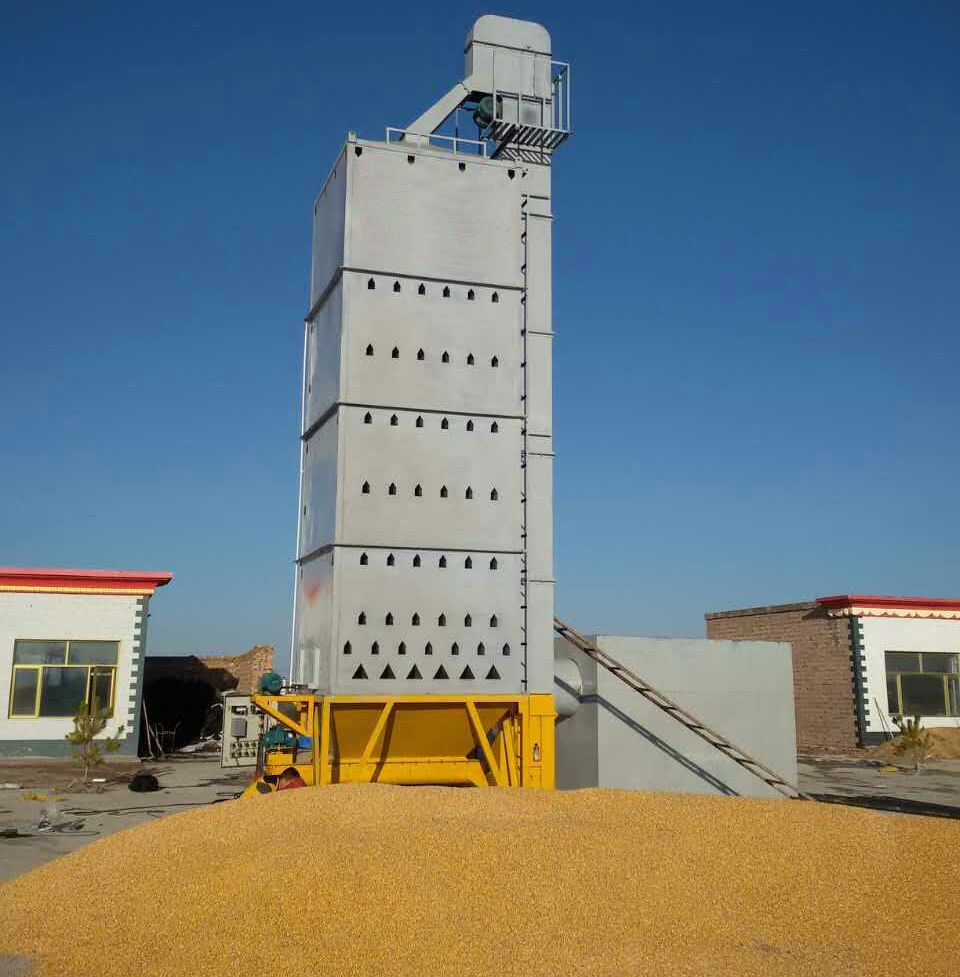Recently, the country's summer grain has gradually entered a mature period, and all regions are preparing for grain maturity.
With the advancement of China's modernization process, although the production equipment and technology of the agricultural industry are constantly improving, there are still many shortcomings. One of the outstanding problems is that the drying equipment in the grain producing area is not perfect, which has certain hidden dangers for the safe preservation of grain and the protection of grain commodity quality.
On May 9, the Ministry of Agriculture and Rural Affairs, the National Development and Reform Commission, the Ministry of Finance, the Ministry of Natural Resources, the Ministry of Ecological Environment, the State Food and Materials Reserve Bureau and other six departments jointly issued the Opinions on Accelerating the Construction of Drying Capacity in Grain Producing Areas (hereinafter referred to as the Opinions), proposing to make up the shortcomings of drying facilities and equipment in grain producing areas in a short time, So that the drying capacity can basically meet the drying demand of grain production areas nationwide.
01. Why use a dryer for grain
After harvest, the water content of grain is high. If the water content cannot be reduced in time, it will be vulnerable to mildew and moth damage.
In the traditional grain drying, the common methods are sun drying, charcoal fire and other ways, but these methods also have many problems, such as poor weather, no way to dry in time, low efficiency, poor quality and so on.
According to the data, in the grain storage sector of China, small farmers and new agricultural operators account for about 50% of the total annual grain output. Due to untimely handling or improper storage and processing, China's grain has suffered serious losses after production, especially in storage, transportation and processing, with an annual loss of about 70 billion jin.
Modern grain drying equipment can effectively solve these problems.
Especially in recent years, there are more extreme weather and climate events, and the regional and periodic flood conditions have had a significant impact on some places, resulting in heavy losses after the food disaster. In this context, it is necessary to arrange more food drying facilities and equipment to meet the normal drying needs and ensure that the drying service can keep up in the event of natural disasters.
02. National distribution of grain drying points and drying centers
At present, there are about 130000 grain dryers (sets) in use nationwide, but the layout is unreasonable, and the drying capacity is still insufficient. Especially in the grain producing areas, there are still shortcomings in the quantity and quality of drying equipment, which affect the production and quality of grain. Therefore, it is urgent to speed up the construction of drying capacity of grain producing areas.
According to the policy planning, a grain production area drying system combining drying points and drying centers will be established in the future.
Among them, the construction of drying point includes a single set of circulating dryer and corresponding cleaning machine, belt conveyor, elevator, dust removal system, drying plant room, etc., mainly drying southern rice, with the processing capacity not exceeding 50 tons.
The drying center is equipped with combined circulating dryer or continuous dryer, including pre drying warehouse, post drying warehouse, dust removal system, grain storage facilities, drying plant room and other equipment, with a processing capacity of more than 50 tons or more than 100 tons.
The scale of drying point is small, the service area is not more than 500 mu, and it can be equipped with a single dryer; The service area of the drying center ranges from several thousand mu to tens of thousands mu. In addition to drying equipment, it is often equipped with warehouses and other supporting facilities.
03. Problems encountered in layout dryer and solutions
The problems faced by accelerating the construction of drying equipment in various regions mainly include balancing cost and income and difficulty in land use.
The construction of an ordinary drying center with a daily drying capacity of 60 tons (which can meet the drying needs of 3000 mu of grain), including the costs of machine purchase, land use, supporting warehouse facilities, power transformation, etc., totals more than 1.3 million yuan, with a large initial investment.
The second is the later operation cost. If natural gas is used as the fuel, the cost of drying 1 ton of grain can reach more than 100 yuan; If electricity is used as energy, it is also difficult to handle power capacity increase.
In response to the problems, the Opinions not only proposed to develop energy-saving technologies and equipment, reduce energy consumption costs, guide grain drying services to expand to economic crops such as rape, improve the utilization rate of equipment and business efficiency, but also gave policy support in electricity and gas consumption, and included grain drying equipment into the pilot range of subsidies for new agricultural machinery products.
The dryer covers a large area. In addition to the supporting infrastructure, it generally needs to cover an area of about 1000 square meters according to the ordinary drying center with a daily drying capacity of 60 tons.
However, the land for grain drying and storage is generally construction land, which has problems such as few land use indicators, great difficulty in applying for and handling, and complicated procedures, which directly affect the improvement of drying capacity of grain producing areas.
The Opinions made detailed arrangements in terms of land use, proposed that the land for grain drying and drying facilities should be included in the management of agricultural land for facilities, and encouraged the use of rural collective construction land for grain drying centers (points) by means of share purchase, lease, etc.
04. Reduce supply chain losses
In addition to grain production and income, we should also pay attention to the consumption of agricultural products in the supply chain.
As a large agricultural product supply chain group, Dijiu Group has established storage bases and collection points all over the country. Through supply chain integration, it can reduce the loss of transportation and storage of agricultural products and achieve rapid and safe storage and transportation of agricultural products.
At the same time, Dijiu Group has cooperated with large community group buying platforms such as Duoduo Shopping, Meituan Selection, and Taocai, and established multiple sales channels including community group buying, bulk trade, online e-commerce, and so on, so as to directly deliver agricultural products from production places to consumers.
It not only effectively reduced the loss and waste in the middle link of food, but also strengthened the control of agricultural product sales channels and quality management, promoted the sustainable development of agricultural products, and contributed to agricultural modernization and food security and stability.








